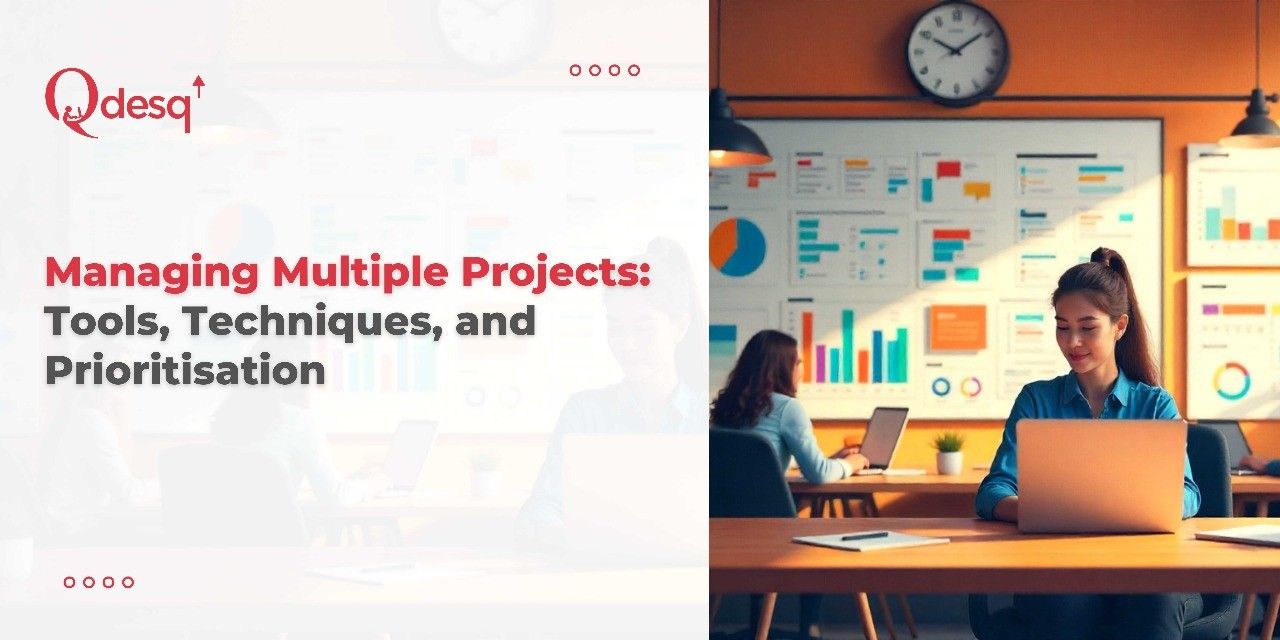Managing multiple projects at once can feel like trying to conduct an orchestra where each musician plays a different tune. While traditional advice suggests “just prioritise and organise,” anyone who has actually juggled several projects knows it’s rarely that simple. Deadlines overlap, priorities shift, team members get pulled in multiple directions, and projects often change scope mid-stream.
The challenge isn’t avoiding this chaos—it’s learning to navigate it effectively while keeping your productivity and sanity intact.
Why Prioritisation Is Key
Prioritisation is a superpower that lets you focus on what really matters. Real-world work is unpredictable: an urgent client request can upend your carefully planned schedule, or a team member might be unavailable at a critical moment. The classic “urgent vs. important” grid works in theory, but in practice, everything can feel urgent and important at the same time.
Understanding which projects truly drive impact—and which can wait—is essential. By focusing on meaningful priorities rather than reacting to every immediate request, you can maintain control and make steady progress without burning out.
Simple Techniques to Prioritise Effectively
One practical method is the Eisenhower Box, which categorises tasks into:
- Urgent and important
- Important but not urgent
- Urgent but not important
- Neither urgent nor important
This helps you identify what needs immediate attention, what can be scheduled for later, what can be delegated, and what you can let go of.
Regularly reviewing your priorities is equally important. Projects evolve, deadlines shift, and new tasks appear. Staying flexible ensures you remain productive without getting stuck in rigid plans.
Coworking Spaces: A Productivity Boost
The environment you work in has a significant impact on your efficiency. Coworking spaces provide a structured yet flexible setup that makes managing multiple projects easier. Quiet zones enable deep focus, meeting rooms support collaboration, and integrated tools like whiteboards and project management software reduce friction. Even small benefits, like separating work from home distractions, can help you switch between projects smoothly and maintain mental clarity throughout the day.
Tools That Simplify Project Management
You don’t have to manage everything manually. Several tools help streamline project tracking and reduce stress:
- Trello & Asana: Create boards and lists for each project to visualise tasks and progress.
- Kanban Boards: Track work at a glance as tasks move through stages.
- Toggl: Monitor time spent on each project to balance workloads effectively.
These tools help you stay organised, align your team, and reduce the cognitive load that comes from juggling multiple projects simultaneously.
Communication That Prevents Interruptions
Many disruptions come from a lack of visibility into your workload. Set clear expectations for communication: emails within 24 hours, urgent matters via phone, and non-urgent queries during weekly check-ins.
Proactive status updates prevent repetitive “checking-in” meetings, while polite but firm ways to say “no” safeguard your time. For example:
“That sounds important; let me review my schedule and get back to you by Friday.”
This approach reduces unnecessary interruptions and allows you to focus on high-priority tasks without straining relationships.
Managing the Mental Load
Switching between projects creates cognitive strain that can go unnoticed. Context-switching, remembering deadlines, and juggling stakeholders adds up quickly. Simple rituals—like taking five minutes to note where you left off and what comes next—can save significant mental energy.
Accept that some tasks may not receive perfect attention. The goal is not perfection; it’s ensuring important work is completed efficiently while minimising the impact of lower-priority items.
Conclusion
Managing multiple projects doesn’t have to be overwhelming. By applying practical prioritisation techniques, leveraging the right tools, maintaining proactive communication, and choosing an environment conducive to focus—whether it’s an office, home, or coworking space—you can reduce stress and enhance efficiency.
Start small, stay consistent, and refine your workflow over time. With practice, handling multiple projects becomes less daunting and more manageable. Take control of your workload, boost your productivity, and enjoy the satisfaction of seeing your projects progress smoothly.











